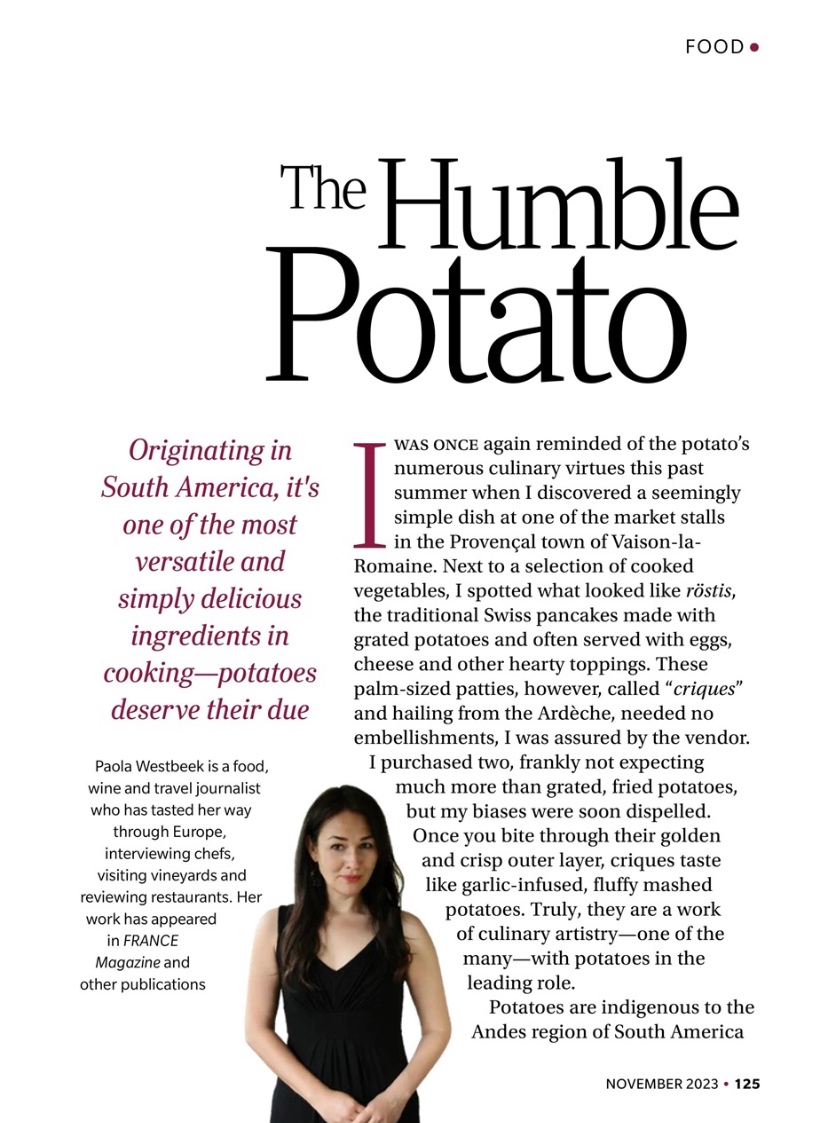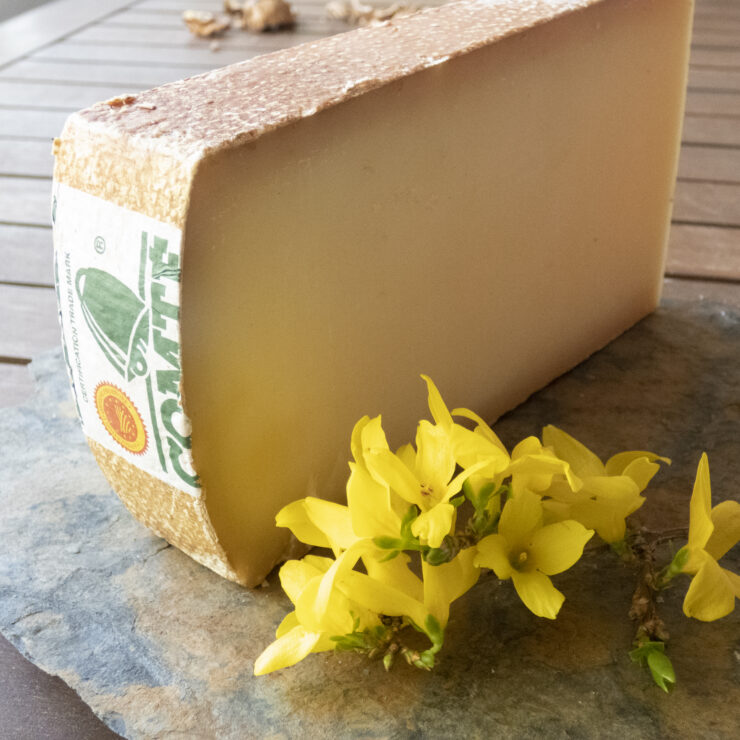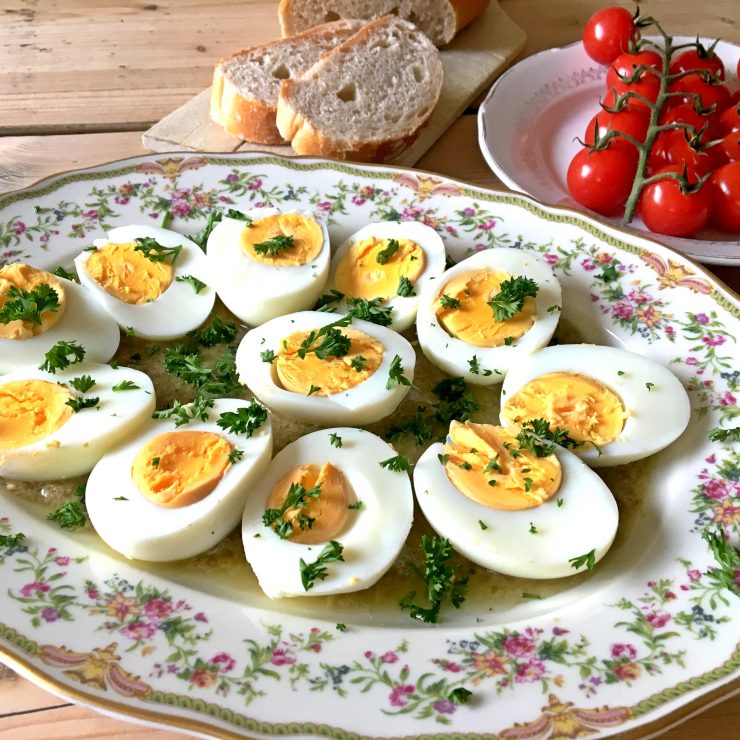My food and drinks column for the November issue of Reader’s Digest
I was once again reminded of the potato’s numerous culinary virtues this past summer when I discovered a seemingly simple dish at one of the market stalls in the Provencal town of Vaison-la-Romaine. Next to a selection of cooked vegetables, I spotted what looked like röstis, the traditional Swiss pancakes made with grated potatoes and often served with eggs, cheese and other hearty toppings. These palm-sized patties, however, called “criques” and hailing from the Ardèche, needed no embellishments, I was assured by the vendor. I purchased two, frankly not expecting much more than grated, fried potatoes, but my biases were soon dispelled. Once you bite through their golden and crisp outer layer, criques taste like garlic-infused, fluffy mashed potatoes. Truly, they are a work of culinary artistry—one of the many—with potatoes in the leading role.
Potatoes are indigenous to the Andes region of South America and were introduced to Europe by the Spaniards in the 16th century. Originally met with suspicion, they were believed to be poisonous and better suited as pig feed. Luckily, towards the end of the 18th century, potatoes gained acceptance as a highly nutritious food source. In fact, in 1787, Antoine-Augustin Parmentier (French army pharmacist and one of the greatest potato advocates) was said to have organised a sumptuous potato banquet at Les Invalides in Paris in an attempt to prove their nutritional and gourmet merit.
Read the full column, published in the October issue of Reader’s Digest UK, here: 124-127 (7) (1)




